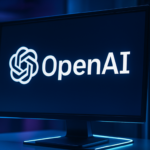Apple (NASDAQ:AAPL) finds itself at a crossroads as it prepares to revitalize Siri with an AI-driven update. Initially set for a 2024 release, the upgrade has been postponed several times, with expectations now aligned for a rollout in spring 2026. These continuous delays offer insights into Apple’s strategic approach, prioritizing quality over expedience. As anticipation builds, the company’s cautious progression highlights both technical challenges and evolving management roles within Apple’s development framework.
Over the years, Apple’s measured advancement in AI technology, particularly generative AI, contrasts with more aggressive strategies by competitors like Amazon, Google, and Microsoft (NASDAQ:MSFT). While these companies embrace cutting-edge large language models and expansive AI initiatives, Apple’s deliberate conservatism reflects its commitment to maintaining high standards, even at the cost of slower implementation.
What Led to the Delays?
The initial expected launch for Siri’s AI enhancements was set for fall 2024. However, challenges related to technical aspects and restructuring within Apple have necessitated a new timeline. This shift underscores Apple’s dedication to refining Siri, aiming to improve upon shortcomings before the public release. While the delay may frustrate those eager for innovation, the company’s focus remains steadfast on delivering a high-quality experience.
Responses and Reactions
In light of inquiries regarding the postponed release, Apple has refrained from specifying a precise launch date. It has reiterated plans for a debut “in the coming year.”
“This work needed more time to reach our high quality bar, and we look forward to sharing more about it in the coming year,” Craig Federighi, Apple’s software engineering chief, remarked at a recent Worldwide Developers Conference.
Tim Cook, Apple’s CEO, also highlighted the necessity for extended development time to polish Siri’s capabilities.
The evolving landscape presents a complicated dynamic where Apple’s progress is met with external and internal pressures. Reports cite technical challenges in modernizing Siri using advanced language models, reflecting a broader discourse on balancing innovation with reliability. This has been compounded by recent shifts in key personnel and organizational strategies within Apple.
Insights from former employees suggest that while Apple progresses with AI advancements, it grapples with unique hurdles unseen in its peers. This further defines Apple’s path as one marked by meticulous advancements rather than hasty attempts at development.
Siri’s ongoing transformation symbolizes Apple’s broader directional approach in technological innovation. As they continue to navigate these complexities, future developments might mirror similar strategic deliberations, prompting industry-wide conversations on the value of quality in tech releases.
As Apple marches toward its new target date, the outcome remains pivotal not only for Siri but also for the company’s standing in artificial intelligence. The choice between patient refinement and swift action sets a contrasting precedent as the industry watches keenly, weighing the implications of time against transformation.










